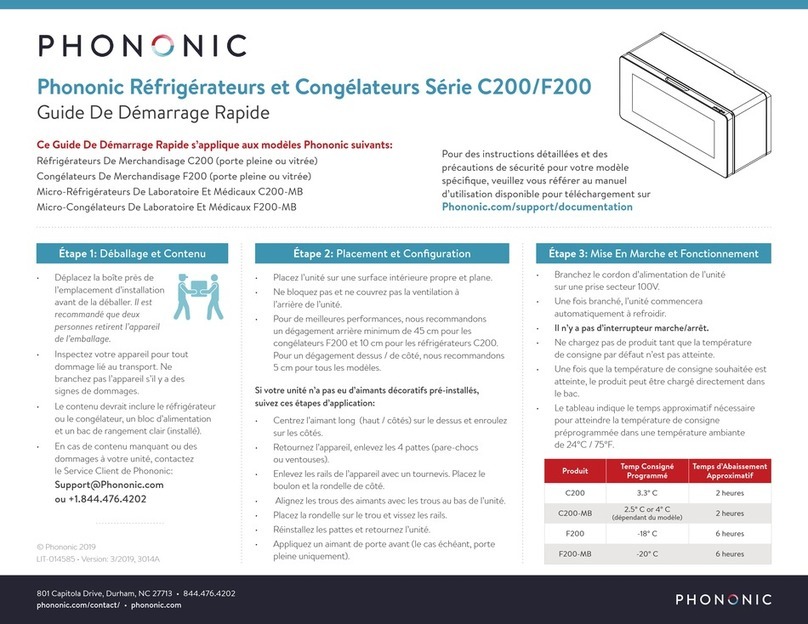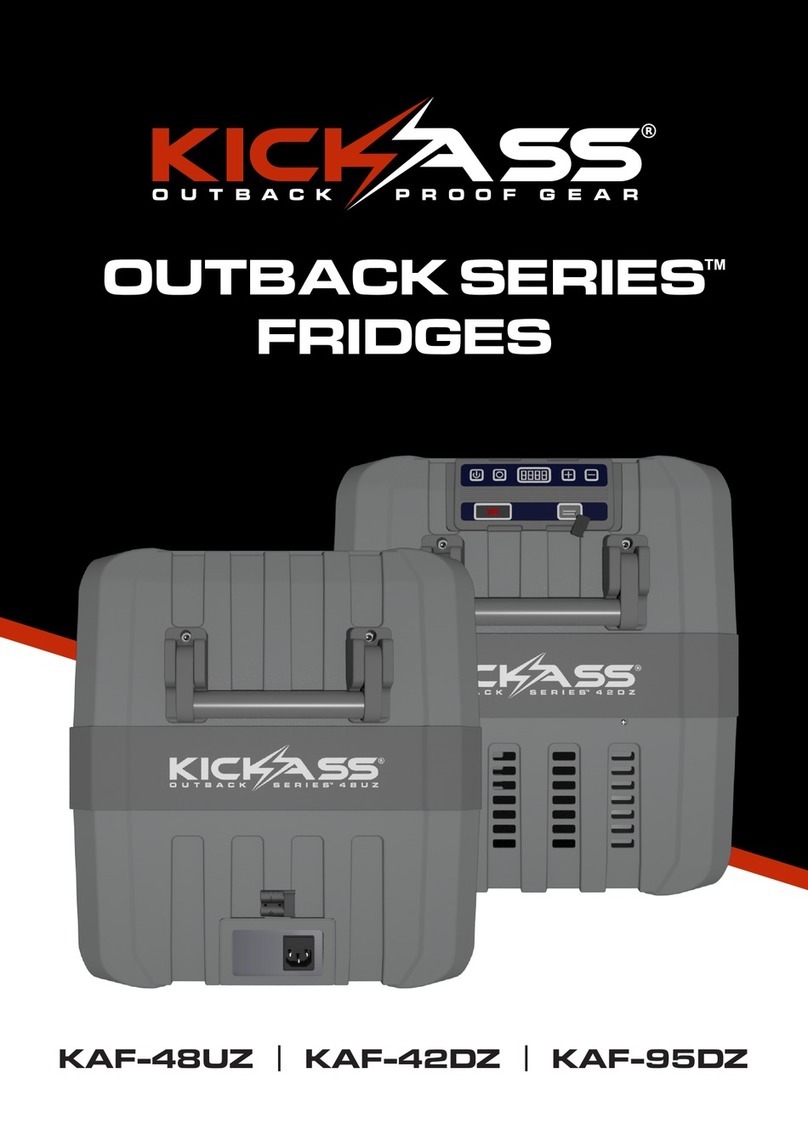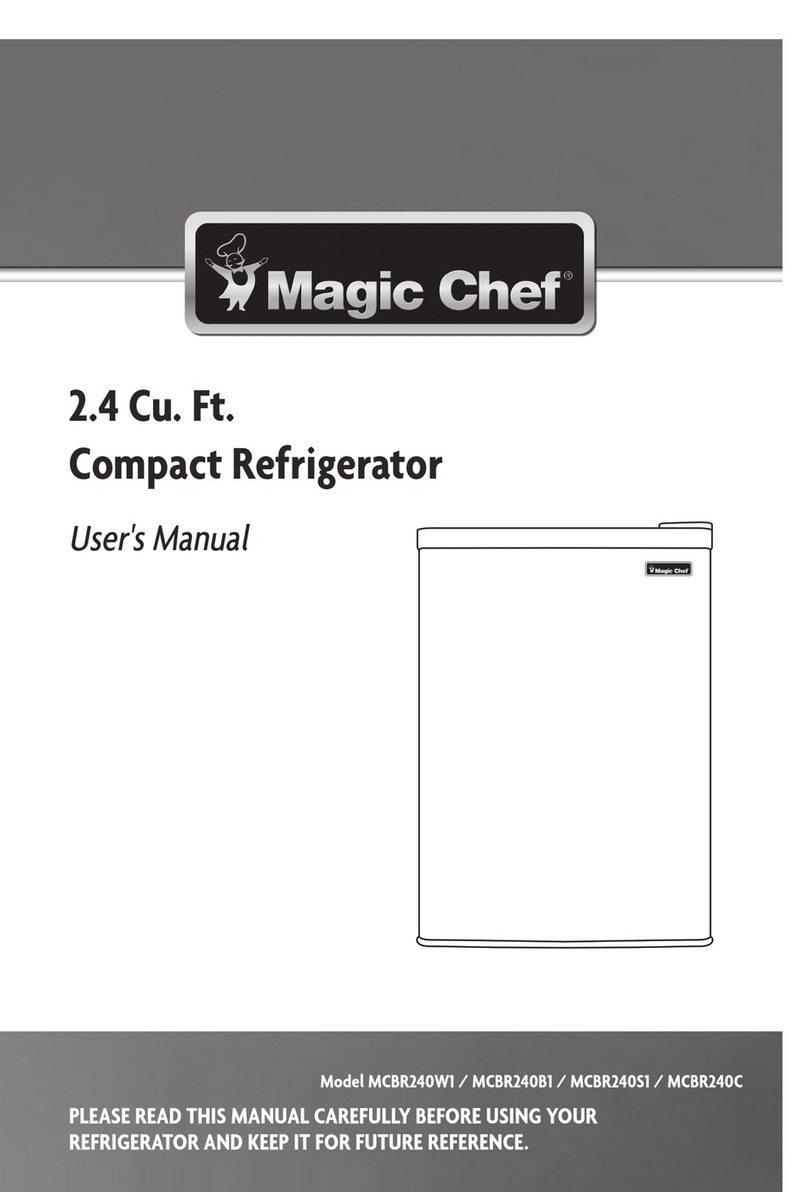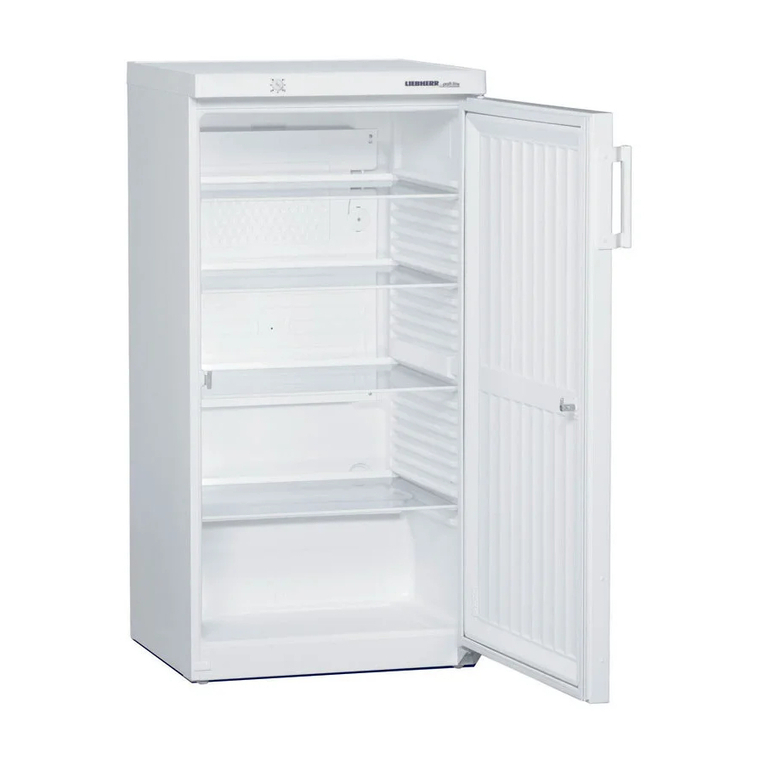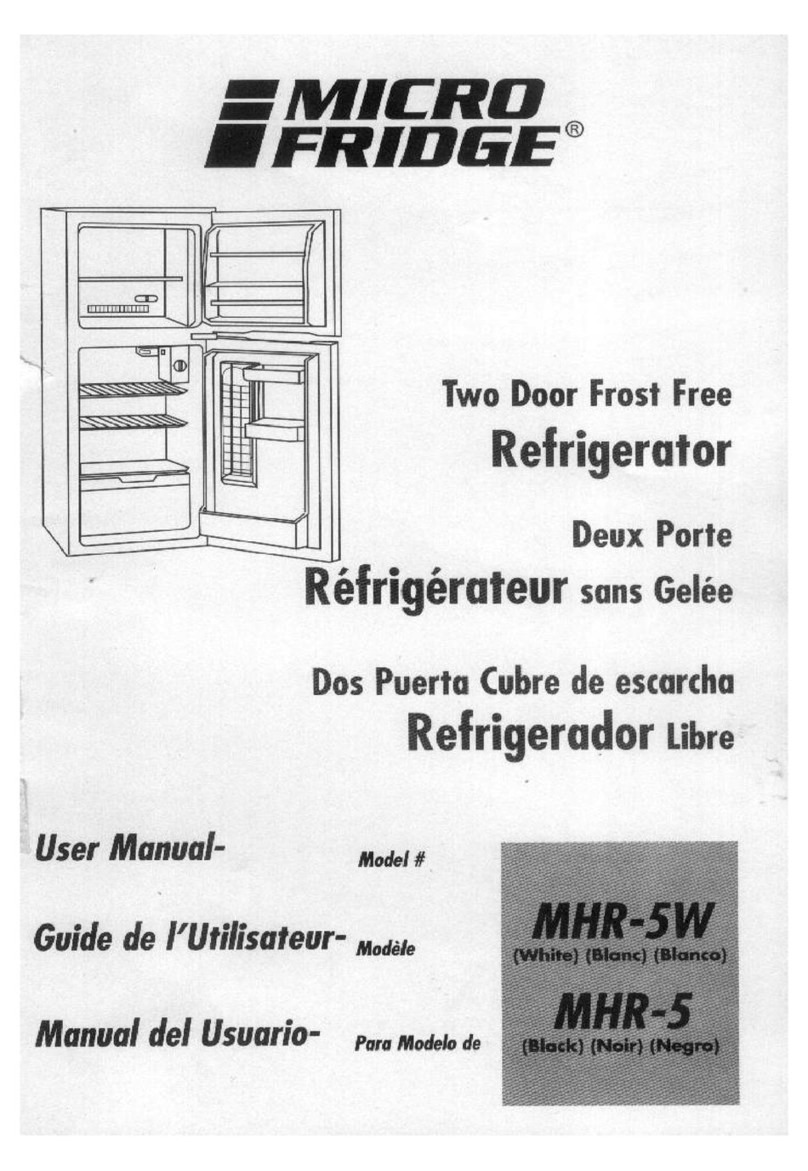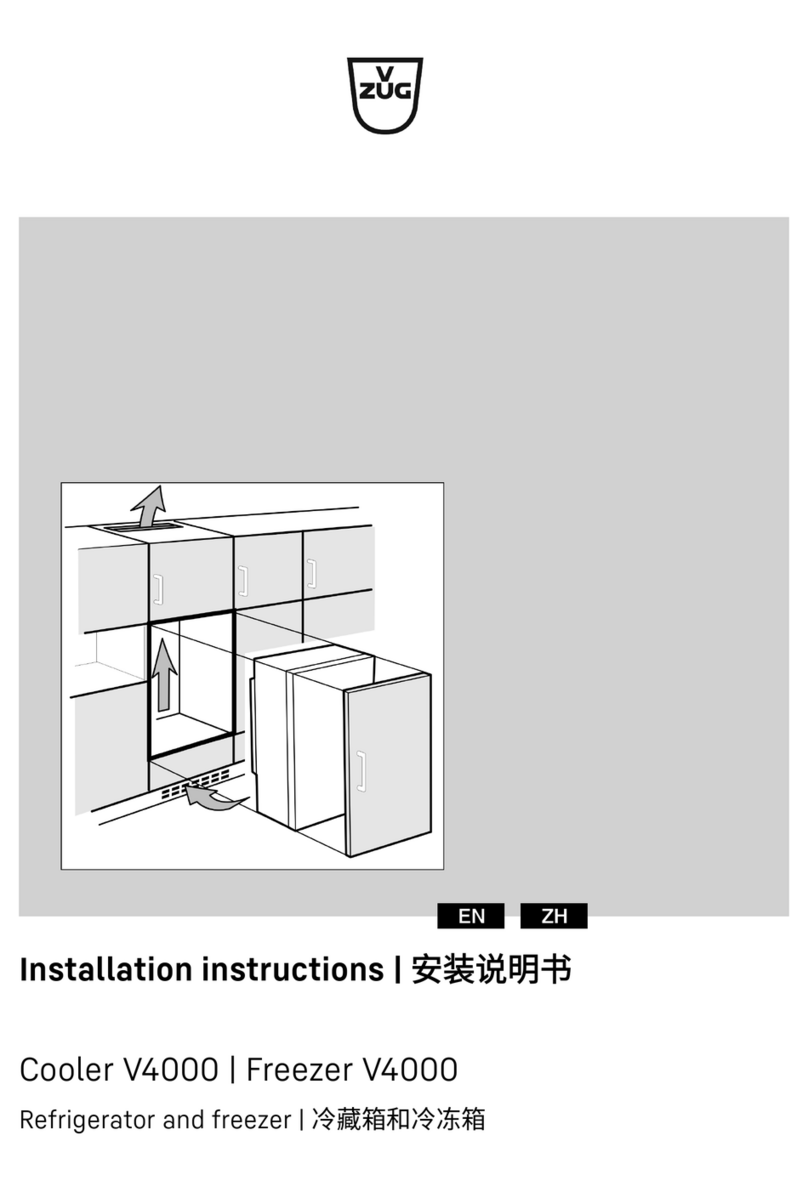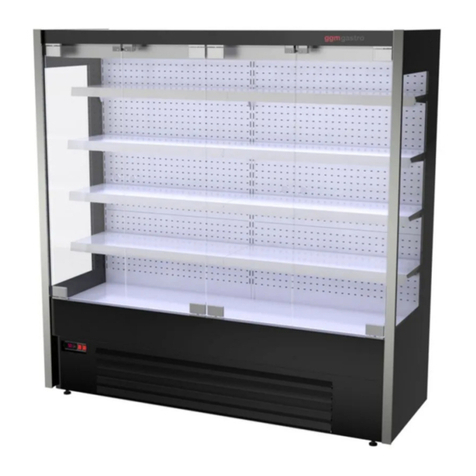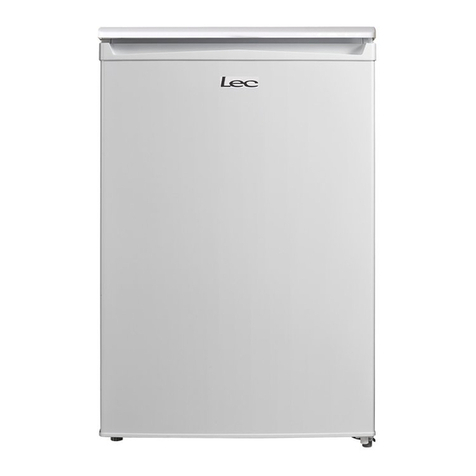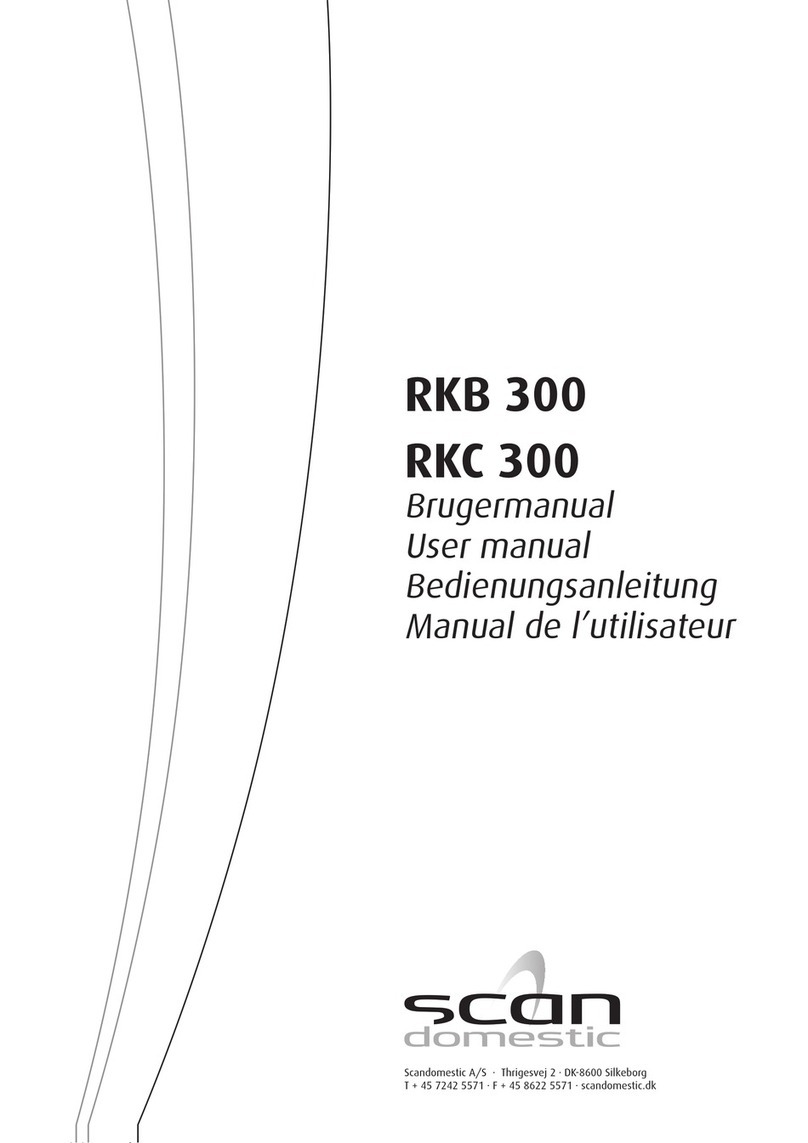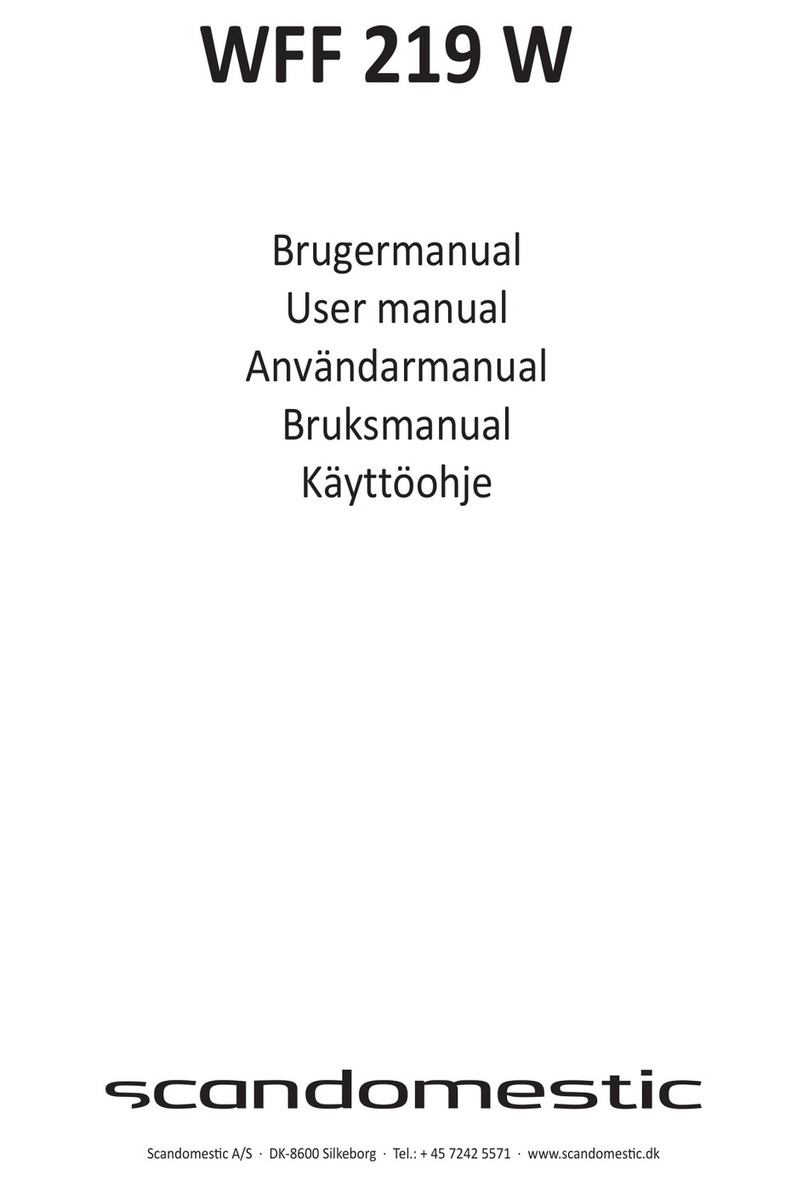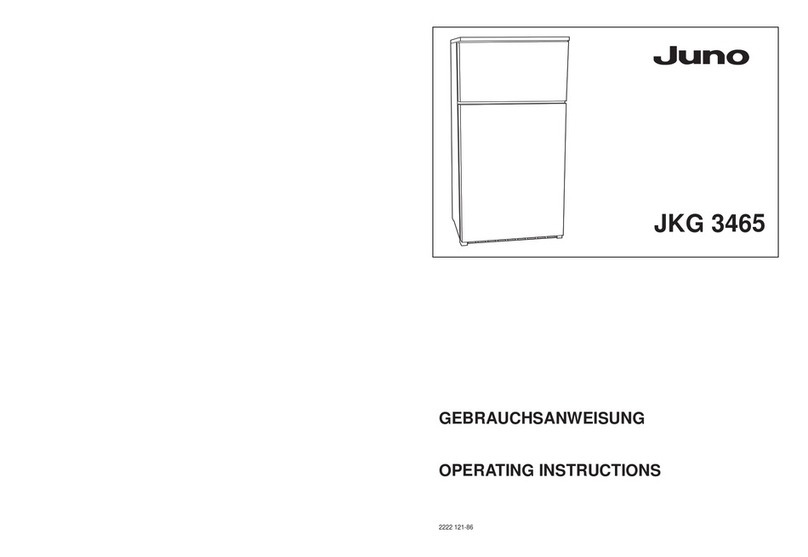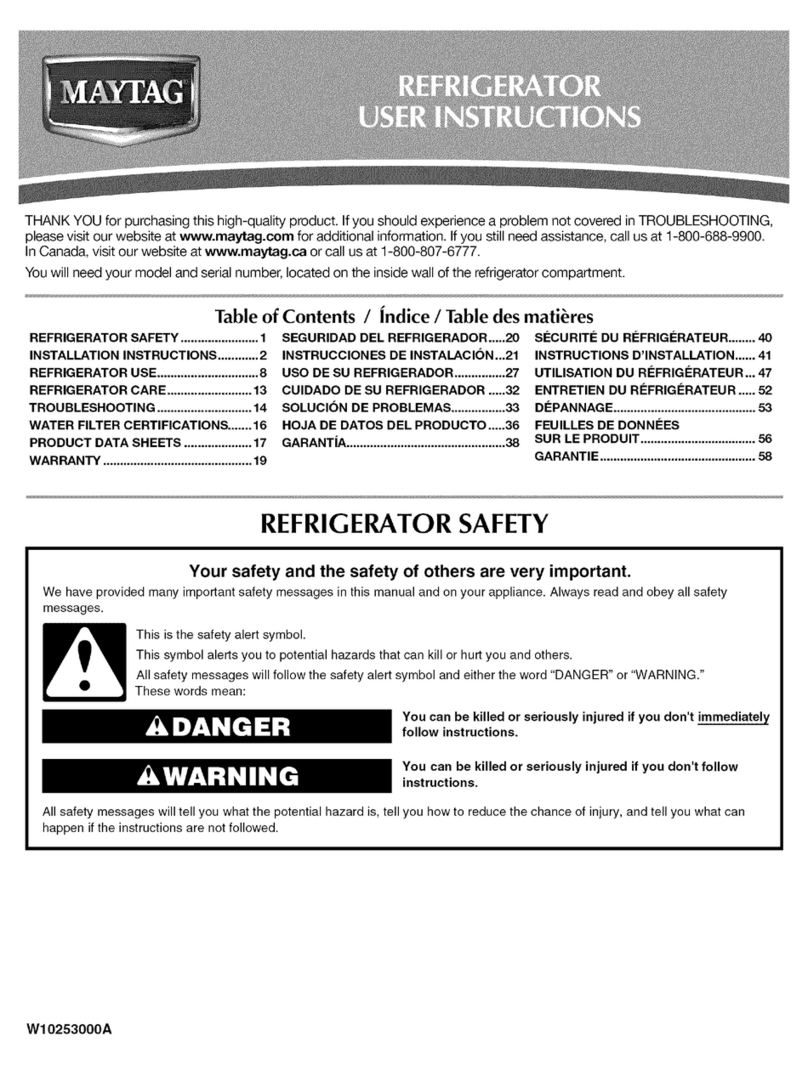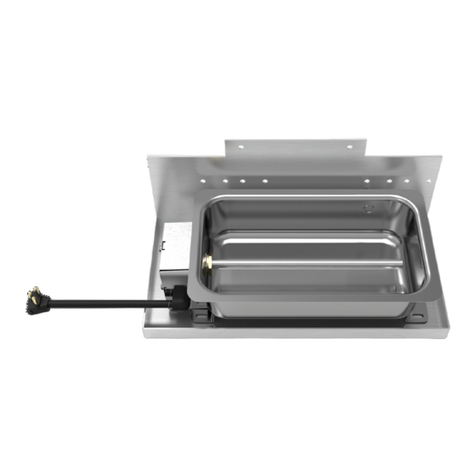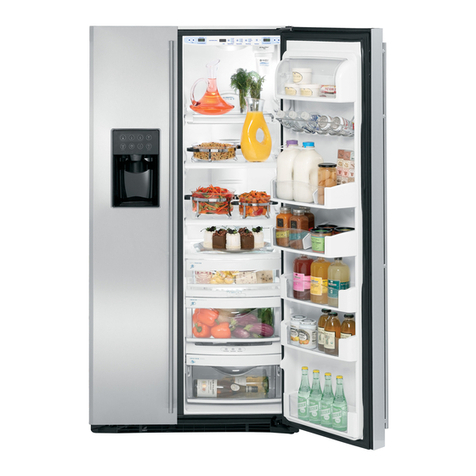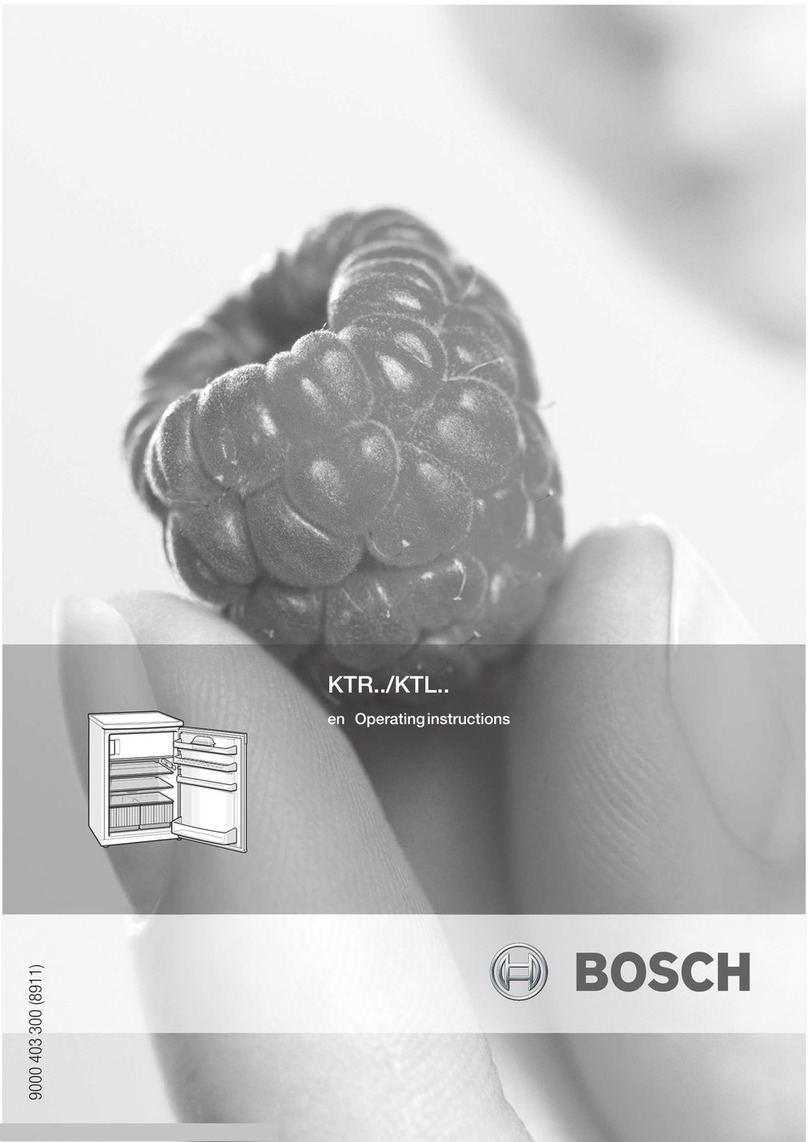Phononic F451 User manual

2
Table of Contents
Safety Precautions.............................................................................................................................................................................................3
Specifications And Features................................................................................................................................................................................5
Agency Approvals.............................................................................................................................................................................................6
Environmental Operating Conditions ...................................................................................................................................................................6
Unpacking Your Freezer/Refrigerator ..................................................................................................................................................................7
Identifying All Parts ..........................................................................................................................................................................................7
Handling Guidelines..........................................................................................................................................................................................8
Opening and Closing the Lid...........................................................................................................................................................................8
Providing Ventilation.........................................................................................................................................................................................8
Powering On.....................................................................................................................................................................................................9
Set Point Temperature....................................................................................................................................................................................9
Loading Freezer/Refrigerator..............................................................................................................................................................................9
Loading Plastic Bags....................................................................................................................................................................................10
Inventory Freezer/Refrigerator Loading..........................................................................................................................................................12
Stacking Freezers/Refrigerators.........................................................................................................................................................................12
Product Maintenance .......................................................................................................................................................................................13
Manual Defrost............................................................................................................................................................................................13
Cleaning Guidelines.....................................................................................................................................................................................13
Drying Copper Contacts ...............................................................................................................................................................................14
End Of Life Disposal.......................................................................................................................................................................................14
Frequently Asked Questions .............................................................................................................................................................................15
Troubleshooting..............................................................................................................................................................................................16
Customer Support............................................................................................................................................................................................16
Appendix 1: System Block Diagram ..................................................................................................................................................................17
Appendix 2: Wiring Block Diagram...................................................................................................................................................................18

3
SAFETY PRECAUTIONS
All electrical appliances present some risk of injury. Your F451 is designed to meet safety
standards.
Take care to carry and move your F451 with caution. Do not place it where it can fall, be
dropped, or where the electrical connection can be submerged into water or other liquids.
Refer to “Unpacking Your Freezer/Refrigerator” for details on handling and moving the unit.
There are no user-serviceable parts within the F451 product.
Symbols used in this manual are described as follows:
Used to indicate an electrical shock hazard.
Used when advice is given to prevent malfunction or injury.
Do not remove the side cover or operate unit with side cover removed. Removal of the side cover
can result in electrical shock. Service only by a factory authorized service person.
CAUTION: Never touch contacts when either side is plugged in as all contacts will be live.
Before installing, using, or maintaining this product, read the manual and product warning labels
carefully. Failure to follow these instructions may cause the product to malfunction, which could
result in injury or damage.
WARNING: This product is not to be used by persons under 8 years, persons with reduced
physical, sensory, or mental capabilities, or persons who lack experience and knowledge unless
they have been given supervision or instruction.
WARNING: Do not allow children to play with this product.
WARNING: Do not step or stand on the product.
WARNING: This product is for packaged food only –fresh food must be placed in a bag or other
container prior to being placed in the freezer/refrigerator.

4
CAUTION: Cells/batteries shall be tested and pass applicable regulations based on type and use
such as:
•ANSI/NEMA C18: ‘Safety Standards for Primary, Secondary, and Lithium Batteries'
•UL1642: ‘Standard for Safety for Lithium Batteries’
Transport regulations based on the following: International Air Transport Association (IATA),
International Civil Aviation Organization (ICAO), International Maritime Dangerous Goods
(IMDG) Code, Transport of Dangerous Goods (TDG).
Note: This equipment has been tested and found to comply with the limits for a Class B digital
device, pursuant to Part 15 of the FCC rules. These limits are designed to provide reasonable
protection against harmful interference in a residential installation. This equipment generates,
uses, and can radiate radio frequency energy and, if not installed and used in accordance with the
instructions, may cause harmful interference to radio communications. However, there is no
guarantee that interference will not occur in a particular installation.
If this equipment does cause harmful interference to radio or television reception, which can be
determined by turning the equipment off and on, the user is encouraged to try to correct the
interference by one of the following measures:
•Reorient or relocate the receiving antenna.
•Increase the separation between the equipment and receiver.
•Connect the equipment into an outlet on a circuit different from that to which the receiver
is connected.
•Consult the dealer or an experienced radio/TV technician for help.
CAUTION: ICES-003 Class B Notice –Avis NMB-003, Class B
This Class B digital apparatus complies with Canadian ICES-003.

5
SPECIFICATIONS AND FEATURES
F451 Freezer
F451 Refrigerator
Basics
Model
F451
F451
Materials
Polypropylene Shell
ABS Side Cover
Polypropylene Shell
ABS Side Cover
Power Input
24VDC, 15A
24VDC, 15A
Performance
Temperature Set
Point
-18 °C / 0 °F
3.3 °C / 38 °F
Temperature
Uniformity
< 3 °C / 6 °F
< 3 °C / 6 °F
Temperature Stability
< 1 °C / 2 °F
< 1 °C / 2 °F
Noise Level
52 dB (A) Max
52 dB (A) Max
Energy
3.6 kWh/day @ 28 °C / 82 °F ambient
0.96 kWh/day @ 4 °C / 39 °F ambient
0.48 kWh/day @ 28 °C / 82 °F ambient
N/A
Rated Amps
13.5 Amps
13.5 Amps
Refrigerant
R744 (CO2)
R744 (CO2)
Safety
Certifications
UL/CSA 60335-1, FCC, Materials are
compliant to NSF51 Standard
UL/CSA 60335-1, FCC, Materials are
compliant to NSF51 & NSF7 Standards
Storage
Internal Volume
27.5 L
27.5 L
Dimensions
Internal Dimensions
398 mm W x 295 mm D x 246 mm H
15.7 in W x 11.6 in D x 9.7 in H
398 mm W x 295 mm D x 246 mm H
15.7 in W x 11.6 in D x 9.7 in H
External Dimensions
600 mm W x 400 mm D x 340 mm H
23.6 in W x 15.7 in D x 13.4 in H
600 mm W x 400 mm D x 340 mm H
23.6 in W x 15.7 in D x 13.4 in H
Minimum Clearance
Requirement
50 mm top & sides / 300 mm fan side
1.9 in top & sides / 11.8 in fan side
50 mm top & sides / 300 mm fan side
1.9 in top & sides / 11.8 in fan side
Weight
14.3 kg / 31.5 lb
14.3 kg / 31.5 lb
Warranty
Full Parts and Labor
1 Year
1 Year

6
AGENCY APPROVALS
Agency
Compliance
NRTL Mark
MET
RoHS
YES
REACH
YES
NSF51
COMPLIANT
NSF7
COMPLIANT (applicable to refrigerator only)
ENVIRONMENTAL OPERATING CONDITIONS
Condition
Operating Ambient Temperature
3 °C –28 °C (37 °F –82 °F)
Storage Environmental Range
-40 °C –60 °C (-40 °F –140 °F)
Relative Humidity: 10%RH - 100%RH
non-condensing
Operating Humidity
No more than 65% RH non-condensing
Product approved for indoor use only
Altitude
For Operation of up to 2,000 m (6,560 ft)
Pollution Degree
2
This freezer/refrigerator is designed for indoor use only. Do not locate or store your
freezer/refrigerator outdoors.

7
UNPACKING YOUR FREEZER/REFRIGERATOR
Phononic recommends you move the box as close as possible to its final location before unpacking. It is
recommended that two people unpack the freezer/refrigerator.
Once unpacked, please take a moment to inspect your new freezer/refrigerator for damage that may have occurred
during shipping. To request service support or a Return Material Authorization (RMA) from Phononic, Inc., please
reference the Customer Support section.
IDENTIFYING ALL PARTS
Figure 1: Labeled diagram of F451 Intelligent Actively Chilled Freezer/Refrigerator
showing Freezer/Refrigerator Handles, Lid Handle, and Stacking Features
NOTE: Desiccant bags included inside the freezer/refrigerator may be discarded.

8
HANDLING GUIDELINES
Always place the unit on a flat table or durable shelf capable of supporting the unit’s weight. The unit should not be
on an inclined surface during loading or unloading to maintain unit stability.
Wherever possible, freezers/refrigerators should be moved using carts or robots. Manual lifting or carrying of the
freezer/refrigerator should be minimized to avoid dropping or damaging the freezer/refrigerator.
Always use both freezer/refrigerator handles to lift the freezer/refrigerator. Do not lift the freezer/refrigerator using
the lid handle.
Opening and Closing the Lid
To open the lid to access the cooled interior chamber, use the metal lid handle to lift the lid.
To close the lid, gently lower the lid towards the freezer/refrigerator body. Do not allow the lid to drop freely and
slam into the freezer/refrigerator body.
PROVIDING VENTILATION
Your freezer/refrigerator is equipped with a ventilation area on the side of the unit. Do not block or cover the vent
area as this can impact performance. It is recommended that the side of the freezer/refrigerator be placed no less than
300 mm / 11.8 in from a solid wall and have open air clearance of no less than 100 mm / 3.9 in above the top and
sides of the unit (Figure 2).
Figure 2: Diagrams depicting the top and side views of the F451
The external fans operate at intervals of variable speeds as needed.

9
WARNING: The technical compartment/fan area has moving parts, uninsulated electrically live
parts, and hot parts. To avoid damaging the unit, do not remove fan covers or insert objects into the
fan screens.
POWERING ON
•Only use the freezer/refrigerator with an approved power module designed to power your specific model.
•Only power the freezer/refrigerator using an SELV (Safety Extra-Low Voltage) source.
There is no on/off switch. Once plugged in, the freezer/refrigerator will begin cooling.
Set Point Temperature
When you power on the unit, the fan will run, and the system will work to reach the default set point of -18 °C / 0 °F
for a freezer or 3.3 °C / 38 °F for a refrigerator. At an ambient temperature of 24 °C / 75 °F, the freezer/refrigerator
will reach the default set point in less than 2.5 hours. The LED indicator will turn green once the unit reaches the set
point.
LOADING FREEZER/REFRIGERATOR
Once the Set Point Temperature has been reached, you may begin loading your products in the freezer/refrigerator.
NOTE: The electrical safety of this product may become impaired if the user disregards the power
safety steps listed above.
Do not load product until the set point temperature is reached.
IMPORTANT: Always provide adequate clearance around air ventilation.
WARNING: Do not load the freezer/refrigerator to exceed 22.6 kg / 50 lb. The
freezer/refrigerator has a maximum food load of 8.1 kg / 18 lb.

10
Loading Plastic Bags
If multiple product types are being loaded, load products in plastic bags. Hook plastic bag handles onto the bag hooks
as shown in Figure 3. These hooks can be used to prevent the bags from collapsing.
Figure 3: F451 plastic bag hooks
Allow adequate clearance around the door seal and air ventilation (inlet/outlet) as shown in Figure 4 & Figure 5.
Avoid having plastic bags or any products extend over the door seal area or blocking the fan inlet at the bottom of the
freezer/refrigerator interior as this can hinder unit performance.

11
Figure 4: F451 fan outlet and fan inlet
Figure 5: Comparison of F451 with fan outlet obstructed (left) and fan outlet unobstructed (right)
IMPORTANT: Always provide adequate clearance around air ventilation and door seal.

12
Inventory Freezer/Refrigerator Loading
Inventory freezers/refrigerators can be loaded without plastic bags as they contain only one product type. Leave a
minimum of 51 mm / 2 in between the fan inlet and the product load and do not fill freezer/refrigerator above
maximum fill height as shown in Figure 6.
Figure 6: F451 displaying minimum gap and maximum fill height
STACKING FREEZERS/REFRIGERATORS
Your freezer/refrigerator is equipped with features to allow stacking for storage and transportation as shown in Figure
7.
Figure 7: Diagram of F451 displaying stacking features and the maximum stack of 3 freezers/refrigerators
IMPORTANT: To avoid a tipping hazard, do not stack more than 3 freezers/refrigerators high.
IMPORTANT: If stacking freezers/refrigerators on a wheeled dolly, take note of the weight rating
and maximum incline rating for the dolly.

13
PRODUCT MAINTENANCE
Manual Defrost
The freezer should be manually defrosted at regular intervals to prevent performance degradation. Phononic
recommends defrosting the freezer according to the schedule outlined below:
Operating
Ambient
Maximum number of lid openings
between defrosts
Maximum operation time between
defrosts [days]
28 °C / 82 °F
9
7
4 °C / 39 °F
40
14
To complete a manual defrost:
1. Fully open the lid using the metal lid handle.
2. Empty the freezer of food and plastic bags.
3. Wait for internal temperature to warm up above 15 °C / 59 °F. To speed up the process, use a fan to blow room
temperature air into the freezer.
4. Once the freezer has completely warmed up, use a cloth or vacuum to remove defrost water from within the unit.
Cleaning Guidelines
Below are general guidelines for cleaning the product. Follow your local health guidelines when cleaning any spilled
food products.
Suitable products for cleaning interior/exterior:
The unit may be cleaned, when needed, using a mild detergent and a damp cloth.
IMPORTANT: Avoid the use of chlorides (cleaners with bleach) as well as abrasive cleaners and
scrubbers such as steel wool.
IMPORTANT: When cleaning, avoid spraying with water as this can damage the
freezer/refrigerator.
Cleaning around ventilation area and precautions:
Periodically inspect and monitor the ventilation area above the side cover for dust accumulation. It
may be cleaned with a duster or vacuum cleaner with a dust attachment.
NOTE:Do not remove the side cover.
NOTE: For the refrigerator model, water condensate should be cleaned/removed from the drip
tray under the fan side if it accumulates.
NOTE: Manual defrost only applies to the freezer model.

14
Drying Copper Contacts
Copper contacts are used to power the freezer/refrigerator (Figure 8). Always wipe the copper contacts dry with a
clean dry cloth before inserting the freezer/refrigerator back into the automated rack system.
Figure 8. Copper contacts located on both the fan and non-fan sides of the F451
END OF LIFE DISPOSAL
When the unit needs to be disposed of, Phononic recommends sending the unit to a local metal recycler for metal
reclaim.

15
FREQUENTLY ASKED QUESTIONS
How does this solid-state refrigeration technology work?
Phononic freezers and refrigerators are built on solid state refrigeration technology. It uses a non-toxic, non-
hazardous refrigerant embedded in the walls to absorb and channel heat energy to an internal, solid-state heat pump;
this component replaces the compressor in a typical freezer. The heat pump cools the refrigerant material when it
channels the heat energy out of the system and into the ambient environment.
How reliable is the system?
Phononic completes strenuous life-testing studies to understand system reliability. Phononic thermal systems have no
internal mechanical parts, are easy to operate, and require minimal maintenance.
Can you guarantee performance?
Our thermal management solutions are tested according to the most demanding consumer and industrial product
safety and reliability standards. The heat pump meets or exceeds Telcordia and JEDEC electronic performance,
testing, and certification standards. Our cooling system contains very few mechanical parts (only fans), eliminating
the most common point of failure.
Where can I find the serial number?
Product serial number, model number, and regulatory approvals are printed on the stickers on the unit side cover.
What kind of maintenance is required?
Check the external fans for dust build-up once a year and clean as necessary.
Periodically check for internal condensation to be wiped out. For freezer models, perform a manual defrost as needed.
Otherwise, there is no maintenance required to keep the system working at peak performance.
How long before I can use the product?
The expected time to set point in different operating ambient temperatures is outlined in the table below:
Operating Ambient
Expected Time to Set Point (hours)
28 °C / 82 °F
3
24 °C / 75 °F
2
4 °C / 39 °F
1
Why is there condensation on the lid gasket?
Any obstruction of the lid gasket can result in the gasket being colder than the dew point and condensation forming.
Inspect the lid seal gasket for damage or obstructions such as the lid lanyard cable. Operation in a high humidity
environment (above 28 °C [18 °F] / 65%RH) can cause condensation.
How long can I run the unit continuously?
Phononic recommends defrosting freezer models according to the schedule outlined in the Manual Defrost section.

16
TROUBLESHOOTING
Issue
Customer Resolution
Unit does not power on
Ensure that both copper contacts (Figure 8) are fully seated on the external
power module contacts. Incomplete mating of one or both contacts could
cause the freezer/refrigerator to not power up.
Some external power modules have a proximity sensor that must be
depressed before power can be delivered to the freezer/refrigerator. If your
installation has a proximity sensor, check that the proximity switch is fully
depressed.
Unit has frost buildup
If the lid is being opened frequently, the cooling system is continuously
working to maintain the set point temperature. As a result, water vapor may
create frost buildup.
Frost buildup is normal for manual defrost, forced air freezers like the F451.
Defrost the freezer per Manual Defrost instructions if desired.
Lid does not close/closes incorrectly
Check to make sure something isn't blocking the lid from closing
completely.
For freezer models, if frost buildup prevents proper lid sealing, unplug the
freezer and defrost per Manual Defrost instructions.
CUSTOMER SUPPORT
To request service support or a Return Material Authorization (RMA) from Phononic, Inc., please call 919-908-6300
(option 4) or contact support@phononic.com. An RMA may not be authorized if a product is out of its Warranty
period, or the failure is caused by a defect not resulting from defective parts, materials, or workmanship within the
Warranty period.
For any questions regarding accessories on spare parts, please either refer to the F451 Service Manual or contact
Phononic support via the phone number or email address listed previously.

17
APPENDIX 1: SYSTEM BLOCK DIAGRAM

18
APPENDIX 2: WIRING BLOCK DIAGRAM
Table of contents
Other Phononic Refrigerator manuals

